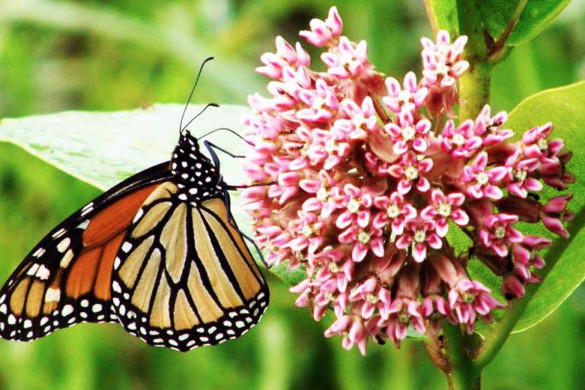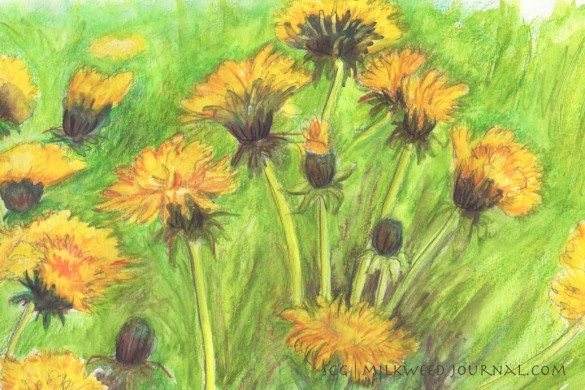In celebration of Pollinator Week (June 17-23), consider adding keystone trees, shrubs and flowering perennials to your garden. You’ll be supporting hard-working pollinators and giving back to nature in myriad ways.
Why are keystone plants so important?
Keystone plants are important because they play a disproportionately large role in supporting other organisms in an ecological community. Without them, the community would shift, or could even collapse.
Recently I wrote about purple flowering raspberry, a keystone species that bees love. Other keystone species in my garden in the Eastern Temperate Forest region include:
- Stiff leaf goldenrod, a host plant for 104 pollinator species (42 native bee species)
- Asters (there are many varieties that collectively serve as host plants for 100 caterpillar species), and
- Woodland sunflower, a host plant for 66 pollinator species (5o native bee species rely on this plant).

Other keystone species in our city garden include:
- Black-eyed Susan
- Green-headed coneflower
- Cherry tree
- Silver maple
- Climbing prairie rose
- Dogwood
- Hemlock
- Serviceberry
- Ironweed
- Blanketflower

Adding keystone native plants to the garden can be an incredibly rewarding journey of exploration and discovery.
Discover keystone plants for your eco-region
Looking for inspiration? Wondering what keystone species you already have in your garden? You can find lists of trees, shrubs and perennial species for the Great Plains region and other eco-regions of North America here on the National Wildlife Federation website.
Also see Pollinator Partnership Canada’s eco-regional planting guides for plants that attract pollinators.











